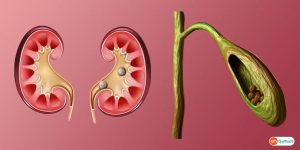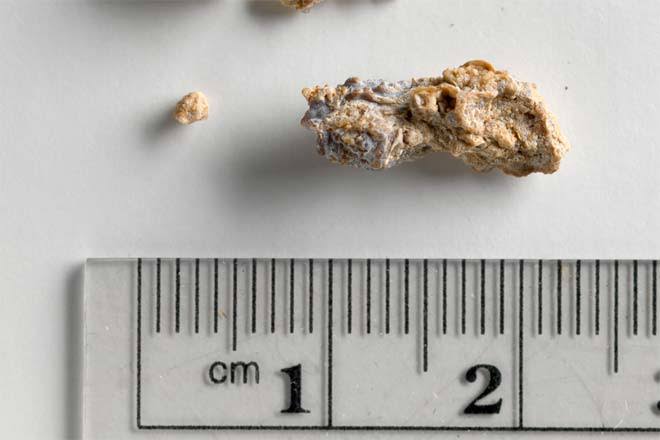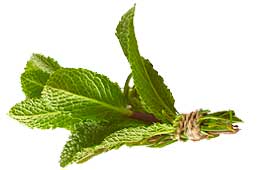It is normal to sometimes get things mixed up especially when they seem to share some similarities such as gall stone and kidney stone, chronic acid reflux and ulcer but we would be focusing on these most common two diseases, “gall stone and kidney stones”. 
- So many people actually have gall stone but would mistake it for kidney stone. Well, worry less if you probably fall into this category. This article would help enlighten you more on the differences of both types of stones.
Gall stones or kidney stones are two conditions that could cause excruciating pains to any individual, but some people really don’t know they are both different preventive measures and treatment approaches.
CHARACTERISTICS OF KIDNEY STONES AND GALLSTONES
- Gall stones are cholesterol deposits that resemble pebbles, WHILE kidney stones are cement-like and are made of dissolved minerals in the urine
- Gallstones are found inside the gall bladder WHILE kidney stones develop in the urinary tract
SIMILARITIES AND SYMPTOMS OF KIDNEY STONES AND GALLSTONES
- Kidney stones are small as sand grains and grow larger causing pain when you try to urinate WHILE gall stones can be as small as sand grains too and can grow as big as a golf ball
- Kidney stones comes with symptoms like blood in the urine, painful urination, inability to urinate frequently WHILE gall stones come mostly with nausea, vomiting, fever and sweating.
CAUSES KIDNEY STONES AND GALLSTONES
- For kidney stones, foods that are high in sodium, animal protein can increase the risk of developing kidney stones. Foods like processed meat, canned/ tinned foods etc
- WHILE a diet high in fat and cholesterol can contribute to gallstone formation.
RISK FACTORS OF KIDNEY STONES AND GALL STONES
- People that have a family history of kidney stones and who are middle aged adults are at higher risks of developing kidney stones
- WHILE adults over 40, especially women and those who are overweight are at higher risks of developing gallstones
TREATMENT/MANAGEMENT OF KIDNEY STONES AND GALL STONES
- Kidney stones can be treated by removing the stones or adhering to a diet that controls the intake of the type of stone formed
- Gallstones can be treated by removing the gall bladder unlike kidney stones also and a diet with controlled cholesterol and low fat.
PREVENTION OF GALLSTONES AND KIDNEYSTONES
- To prevent gallstones, while trying to lose weight, make sure to do it slowly and correctly. Don’t skip meals and exercise regularly.
- Careful with the use of birth control pills to prevent gallstones
- Kidney stones can be prevented in a very easy way: just drink lots of water and maintain a healthy fluid level every day
If you’re experiencing any of these symptoms mentioned above, it is very important you contact health care givers and professionals so they could help treat whichever stone it may be.
SOURCES:
- https://www.adventhealth.com/hospital/adventhealth-orlando/blog/gallstones-vs-kidney-stones-how-similar-are-they#:~:text=A%20kidney%20stone%20is%20a,large%20as%20a%20golf%20ball.
- https://health.clevelandclinic.org/whats-the-difference-between-gallbladder-and-kidney-stones/
- https://www.ncbi.nlm.nih.gov/pmc/articles/PMC7311631/
- Quantitative analysis of gallstones using laser-induced breakdown spectroscopy.
Singh VK, Singh V, Rai AK, Thakur SN, Rai PK, Singh JP
Appl Opt. 2008 Nov 1; 47(31):G38-47.





 Taste: Sweet and pungent flavour. Works well in
Taste: Sweet and pungent flavour. Works well in  Taste: Sweet and peppery.
Taste: Sweet and peppery.
 Taste: Chillis vary quite a lot in strength, so add a little at first and taste your dish. Cayenne is a specific type of chilli.
Taste: Chillis vary quite a lot in strength, so add a little at first and taste your dish. Cayenne is a specific type of chilli. Taste: Mostly used in
Taste: Mostly used in  Taste: Onion-like but less powerful.
Taste: Onion-like but less powerful. Taste: Coriander leaves have a distinct earthy and lemony flavour, while coriander seeds have a warm, spicy, citrus flavour when crushed.
Taste: Coriander leaves have a distinct earthy and lemony flavour, while coriander seeds have a warm, spicy, citrus flavour when crushed. Taste: Dill has a strong taste, often compared to fennel, star anise and celery.
Taste: Dill has a strong taste, often compared to fennel, star anise and celery. Taste: Earthy and smoky.
Taste: Earthy and smoky. Taste: Peppery, lemony and slightly sweet, with a sharp aroma.
Taste: Peppery, lemony and slightly sweet, with a sharp aroma. Taste: Oregano has a warm, aromatic, slightly bitter taste and a potent aroma.
Taste: Oregano has a warm, aromatic, slightly bitter taste and a potent aroma. Taste: Paprika is milder and sweeter than cayenne pepper.
Taste: Paprika is milder and sweeter than cayenne pepper.
 Taste: From the Mediterranean coast, sage is like rosemary, with more lemon and eucalyptus.
Taste: From the Mediterranean coast, sage is like rosemary, with more lemon and eucalyptus. Taste: Adds a distinctive, bittersweet liquorice-like flavour to foods, and has an aroma similar to star anise.
Taste: Adds a distinctive, bittersweet liquorice-like flavour to foods, and has an aroma similar to star anise.
 Taste: Has a distinctive yellow colour so is sometimes used as a cheaper alternative to saffron, although it tastes quite different.
Taste: Has a distinctive yellow colour so is sometimes used as a cheaper alternative to saffron, although it tastes quite different.